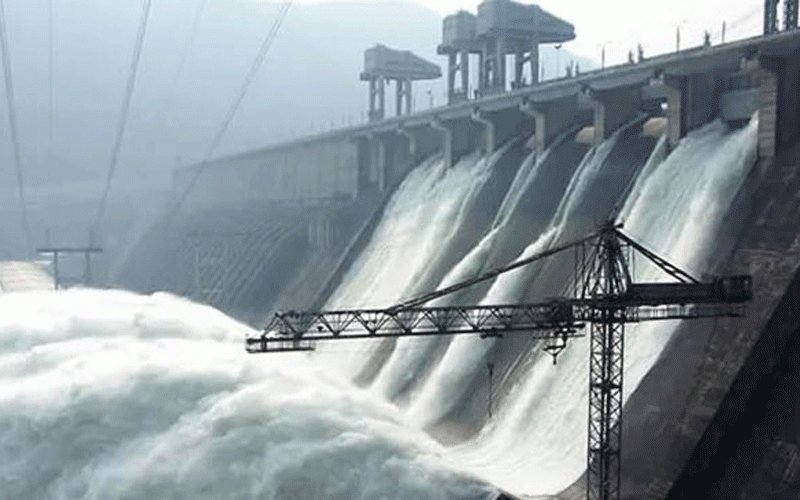
IT has been known for decades that there would be a serious power deficit in the Southern African Development Community. The establishment of the Harare-headquartered Southern African Power Pool (SAPP) in 1995 was one way the region hoped to mitigate the problem.
It did not work quite as expected because governments set on their laurels and neglected to play their part in building new power stations, or enlarging existing ones.
With the exponentially growing population and the ever-changing rainfall patterns, it was always obvious that Zimbabwe had to prioritise the power generation sector and diversify from thermal and hydro.
It was foolish to depend so much on Kariba South Power Station because hydropower stations are always seasonal.
It was also known that thermal power stations at Hwange, Bulawayo, Munyati and Harare had short lifespans and needed to be regularly refurbished at immense cost.
With the collapse of the National Railways of Zimbabwe it became uneconomical to run Bulawayo, Munyati and Harare power stations because of the long distances coal had to be hauled from source.
Faced with these challenges, what did the Zimbabwe government choose to do to alleviate them?
It continued its patchwork on the Hwange generators and to enlarge Kariba; meaning there was no change of mindset.
- NRZ demands stiffer penalties
- Sadc meets over water, energy and food security
- 5 Zim cops off to South Sudan
- Opposition loses hope on reforms
Keep Reading
The talk of renewable energy is not new; for many years experts have talked about exploiting Zimbabwe’s unlimited access to solar and wind.
There was a time when power utility Zesa had mooted the plan that every new house built in Zimbabwe must harness solar energy so it does not have to draw energy from the grid. But this was never followed through.
The urban sprawl, that has seen thousands of houses built in towns and cities and being connected to the grid, shows just how strained the grid is.
Imagine if all those houses built since the year 2000 had not been connected to the grid and depended on solar, it means our industry would have more energy at its disposal.
The Intratrek scandal, where a local company was awarded a tender to build a solar power station in Gwanda and was paid US$5,2 million for the feasibility study, but simply never did it, gives a window into the corruption that hampers national projects.
The talk of natural gas has also not been new. Blueprints upon blueprints have been written about exploiting the unlimited coal-bed methane reserves in Matabeleland North province.
This project has been on the drawing table since at least the turn of the millennium.
Independent power producers (IPPs) have volunteered help and some have invested huge amounts in creating solar fields and mini-hydro power stations to help fill in the gap.
But they have met government red tape.
The IPPs argue that they can only attract investment if investors can recoup their money without problems and if paid in foreign currency.
But the government, according to the IPPs, is refusing to comply.
On this, high-placed sources in the energy sector say the buck stops at the Ministry of Finance, which does not see the IPPs as part of the solution to the energy crisis.
Billions of dollars have been spent so far on rural electrification – a noble idea. When it was accelerated in 2001/2, it was meant as a campaign gimmick to help the late Robert Mugabe win the presidential election of 2002.
Much infrastructure was erected to ensure power reached some of the remotest townships in Zimbabwe where the energy is used — you guessed it — to run bottle stores.
This was an act of populism that will haunt the energy sector for years to come — not only are the tariffs difficult to collect from these rural outposts, but also they have become conduits of energy pilferage through illicit connections.
Instead, the government should have promoted renewable energy projects in the rural areas and used the rural electrification money to build power stations for the benefit of industry.
It is doing this now but this will take ages and will not alleviate the current problems.
The energy challenges that Zimbabwe faces now are self-inflicted; they are a result of a lack of planning and poor strategic thinking.
Now that international investors have said they would no longer invest in coal-powered power stations, for reasons to do with climate change, the solution to the country’s power problems will take quite a while to materialise.
The immediate solution will be to accelerate the switch to renewable energy, which fortunately, is a lot cheaper than investing in new power stations.
In the meantime, those getting power from the national grid must be made to pay sustainable tariffs to enable Zesa to import power and maintain its rickety infrastructure.
Zimbabweans are prepared to pay a fair amount to keep switched on. Politically-driven policies, such as controlling what consumers have to pay for energy, are not good for anybody and are counterproductive.










